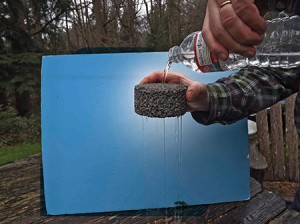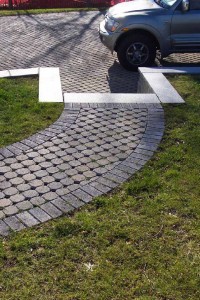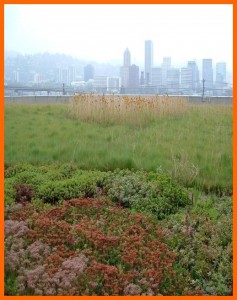 Good stormwater management not only prevents damage to property and people from flooding, but it also protects the quality of our water. Stormwater management is done by most cities and towns at a large scale, but you can do a lot on your own property to help out. These home-based Low Impact Development (LID) techniques include rain gardens, permeable pavement, rainwater catchment, and soil amendments for better absorption.
Good stormwater management not only prevents damage to property and people from flooding, but it also protects the quality of our water. Stormwater management is done by most cities and towns at a large scale, but you can do a lot on your own property to help out. These home-based Low Impact Development (LID) techniques include rain gardens, permeable pavement, rainwater catchment, and soil amendments for better absorption.
LID can be applied to new development or an existing home and can be successful in many different situations from urban to rural. Some techniques are simple and others require some engineering. All require a good understanding of how water flows to and from your home and land.
LID DOESN’T BELONG EVERYWHERE: There are certain situations when Low Impact Development practices are not advised or recommended. While infiltration of rainwater into the soils is usually desirable, directing water to some locations can create problems with septic system drainfields, may flood crawlspaces, or de-stabilize slopes and bluffs. Check out the Washington Department of Ecology’s “Managing Drainage on Coastal Bluffs” publication and seek professional advice regarding drainage methods if needed. Refer to Guideline 5 for more information about reducing erosion and landslides.
Some LID techniques you might consider for your own property include:
- Preservation. Keep as much of the desirable, existing soils and ve
 getation as possible.
getation as possible. - Amending soils. Adding compost to soils disturbed during construction allows you to restore the soil’s health and ability to infiltrate rainwater. This is also something that can be done with your existing property.
- Pervious paving. Alternative forms of asphalt and concrete paving allow rainwater to soak through the paving rather than flowing across it. Pervious pavers and grids are also available. These options provide filtration, reduce runoff, and enable water to soak in to replenish groundwater.
- Rain gardens. A rain garden is essentially a shallow depression constructed to fit your yard, that uses a special soil mix and a variety of plants specifically selected for rain gardens. The soil mix supports plant growth, holds moisture and allows the water to soak in. Rain gardens are not suitable in every location, especially near a bluff. More information can be found at raingarden.wsu.edu.
- Rooftop rainwater catchment system. Installation of a rain barrel next to your home allows you to collect rainwater, conserving it for future use in your yard and garden. Several can be installed, or you might want to collect more rain through use of a cistern. For every 1,000 square feet of rooftop, you can collect over 600 gallons of water for every inch of rain that falls on the roof! Websites contain information on creating a variety of rain barrel systems and cistern systems.
- Vegetated (green) roofs. Top your structure with plants instead of shingles, helping you to reduce pollutants and slow down roof water runoff. Make sure your building can bear the weight of snow and soil before doing so.
More information about low impact development strategies can be found at raingarden.wsu.edu/
